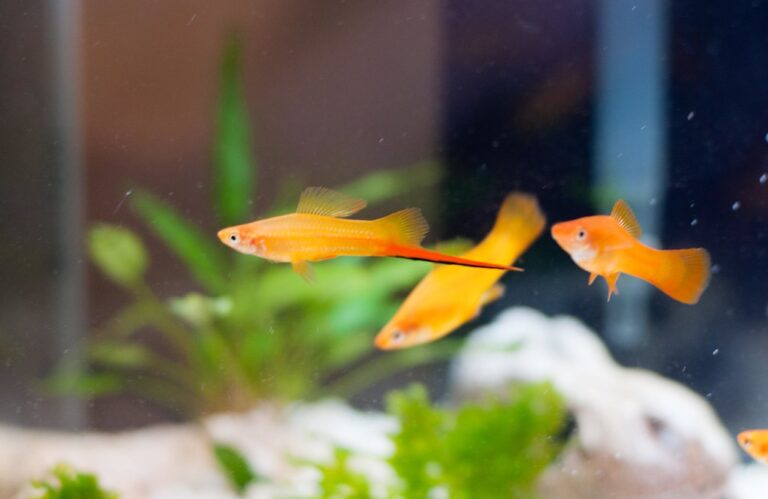German Blue Ram Tropical Fish: A Guide for Aquarium Enthusiasts
Table of Contents
Aquarium enthusiasts and fish hobbyists often find themselves captivated by the striking beauty and delicate nature of tropical fish. Among the most coveted species is the German Blue Ram, recognized for its distinct appearance, engaging behavior, and rewarding care requirements. This comprehensive guide is crafted for those who wish to learn all about the German Blue Ram and how to provide them with the ideal environment for a long, healthy life in your home aquarium.

Introduction to the German Blue Ram
The German Blue Ram, also known as the Blue Ram or Butterfly Cichlid, originates from South America’s Orinoco and Rio Negro basins. This cichlid stands out with its vibrant colors—males sport deeper blues and brighter yellows, while females tend to have more subtle coloration. Despite their small size compared to other cichlids, German Blue Rams are known for their large personalities and inquisitive behavior.
Physical Characteristics
A mature German Blue Ram is nothing short of a spectacular sight in an aquarium. Their bodies are marked by iridescent scales that shimmer under the right lighting. These fish have extended rays on their dorsal fins, creating a sail-like effect. Their eyes are a standout feature, with a striking bold black marking through the middle, accentuating their intense gaze. The mix of blue and yellow hues on their flanks, intertwined with patches of red, makes them one of the most visually appealing species for aquarists.
Size, Lifespan, and Habitat Preferences
German Blue Rams are relatively small, with the average size ranging from 2 to 3 inches in length, making them a perfect fit for community tanks with other peaceful species. In the right conditions, they can live up to 4 years, showcasing their full array of colors and playful manner. They prefer well-planted tanks with plenty of hiding spots and subdued lighting, mimicking the natural environment of the warm, slow-moving waters they hail from.
Tank Setup and Care for German Blue Rams
Creating a suitable environment for German Blue Rams is crucial for their well-being and color development.
Ideal Tank Size and Water Parameters
A single pair can be housed in a 20-gallon tank, but a larger tank of 30 gallons or more is recommended if you plan to have a community setup. The water parameters need to be closely monitored, with a pH range of 5 to 7 and a temperature between 78-85°F being ideal. The use of a soft, sandy substrate, which replicates the river beds they are accustomed to, is preferred to prevent damage to their delicate digestive system.
Compatible Tank Mates and Feeding Habits
German Blue Rams are peaceful but can become territorial when breeding, so avoid aggressive tank mates. They thrive with other small and calm species, such as tetras and gouramis. A varied diet is essential, including high-quality flake foods, as well as freeze-dried and live foods, to ensure a complete nutritional intake and support their health.

Breeding and Reproduction of German Blue Rams
For many hobbyists, breeding German Blue Rams becomes a rewarding challenge, amplifying the appeal of these already popular fish.
Conditions for Breeding Success
Creating the right environment for breeding is essential. Tanks should be well-aerated with plenty of vegetation and flat surfaces for the female to lay her eggs. Increasing the temperature slightly and the addition of live foods to their diet can spur them into breeding condition. Once a pair has bonded and chosen a breeding site, they’ll clean and protect the eggs vigorously, usually laying a clutch of around 100-200 eggs.
Caring for Fry and Parental Behavior
The parents will defend their territory, and the female will care for the eggs most of the time, while the male patrols the perimeter. Once the fry hatch, both parents will guide them around, even picking them up in their mouths if they sense danger. Feeding them infusoria, then brine shrimp and microworms as they grow larger, will ensure their healthy development into juveniles.
Common Health Issues and Care
Maintaining the health of your German Blue Rams requires vigilance and a proactive approach to prevention and treatment.
Identifying and Treating Common Diseases
Like any fish, German Blue Rams are susceptible to common aquarium diseases such as ich, fin rot, and bacterial infections. Prompt identification of symptoms, such as erratic swimming or changes in coloration, is essential. Isolating and treating the affected fish, as well as maintaining pristine water conditions, is crucial to their recovery.
Tips for Maintaining Fish Health
Regular water changes, a balanced diet, and careful introduction of new tank mates can prevent many health issues. Ensuring the tank environment remains stable, with appropriate filtration and a consistent cleaning schedule, will significantly reduce the risk of stress-related illnesses. Observation and interaction with your fish can also facilitate early detection and treatment of any health concerns.
Conclusion: The Appeal of German Blue Ram Tropical Fish
The German Blue Ram is much more than a beautiful addition to an aquarium. It fosters an appreciation for the delicate balance of a well-maintained ecosystem and rewards caretakers with the joys of breeding and fostering new life. Its peaceful nature and interactive behavior make it a great companion for beginners and seasoned hobbyists alike. Understanding their needs and behaviors is integral to providing the best care possible for these remarkable tropical fish. Whether you’re drawn to them for their beauty or the challenge of breeding, the German Blue Ram stands as a testament to the wonders of the underwater world within our homes.






